East Ward, Westmorland
Up to 1834
Eden's 1797 survey of the state of the poor in England noted that in Orton, the poor "have generally been farmed for twenty years. One pauper is maintained in the contractor' house, the others are relieved at home."
Kirkby Stephen and the parishes of Hartley, Soulby, Mallerstang, Nateby and Winton were united under the terms of Gilbert's Act of 1782. In 1818, the Gilbert Union took over a cluster of buildings in Kirkby Stephen for use as a workhouse. The roughly triangular site was to the north of St Stephen's church and included a former manufactory, probably a cotton mill. In 1827, part of the premises was let to John Henry Wilson from Manchester who employed the paupers and others in the making of silk and cotton goods.
A directory of 1829 recorded that in Newbiggin "upon the large and unenclosed common are several cottages built for the reception of paupers."
After 1834
The East Ward Poor Law Union formally came into being on 31st October 1836. Its operation was overseen by an elected Board of Guardians, 38 in number, representing its 30 constituent parishes as listed below (figures in brackets indicate numbers of Guardians if more than one):
County of Westmorland:
Appleby St Lawrence (2), Appleby St Michael Bondgate [Bongate] (2), Ashby, Brough (2), Brough Sowerby, Crosby Garrett, Dufton, Hartley, Hillbeck, Kaber, Kirkby Stephen (3), Kirkby Thore, Marton (2), Mallerstang, Milburn, Great Musgrave, Little Musgrave, Nateby, Newbiggin, Ormside, Orton, Ravenstonedale, Smardale, Soulby, Stainmore (2), Temple Sowerby, Wateby [Waitby], Warcop, Wharton, Winton.
Later Additions:Colby (from 1894), Crackenthorpe(from 1894), Hoff (from 1894), Murton (from 1894), Tebay (from 1897).
The population falling within the Union at the 1831 census had been 14,555 — with parishes ranging in size from Waitby (population 41) to Orton (1,501) and Kirkby Stephen (1,409). The average annual poor-rate expenditure for the period 1834-36 had been £5,647 or 7s.9d. per head of the population.
The new East Ward Union took over and enlarged the existing workhouse at Kirkby Stephen. The entrance at the south of the site had receiving wards to its east and stores to its west. At the south-west corner of the site were the board-room, master's office, nursery, and kitchen with the dining room to its north. Female vagrants' wards were at the south east, with male vagrants' wards and the infirmary at the north-east. The main building lay at north-west with the ground floor accommodating able-bodied women and old men. The workhouse location and layout is shown on the map below from about 1900:
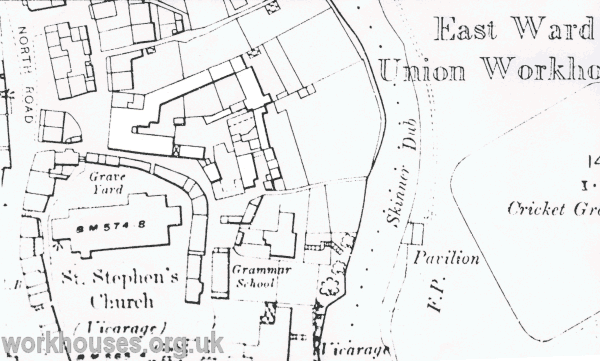
East Ward workhouse site, 1900
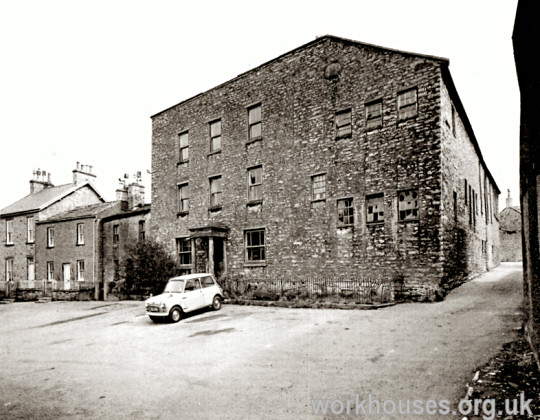
Former East Ward workhouse from the south-west, 1970s
In December, 1836, Mr Thomas Parkinson of Kirkby Lonsdale was appointed as master of the workhouse at a salary of £30 a year. His wife, Mary, took on the role of matron at a salary of £15 a year. The couple held their posts until 1846.
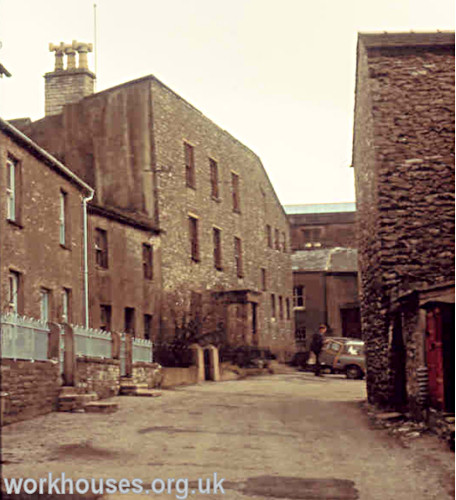
Former East Ward workhouse from the north-west, 1970s
After 1930, the workhouse became a Public Assistance Institution known as Eden House. Its latter years were recalled in 1994 by a former employee at the establishment:
The pay was £50 per year and my emoluments were valued at £60 as we were obliged to sleep in. I worked a month on days and a month on nights, 10pm to 8am one night, 8pm to 8am the next night, no night off. When we finished the month we had off from the Saturday morning until the Tuesday morning.
There were no cleaners employed as all the Part III inmates were made to do all the work - cleaning rooms, washing up, preparing vegetables, gardening, shovelling coal and chopping sticks under supervision. The bedrooms of Part III were very basic with a bed, chair and chamberpot. The toilets were outside except for the sick wards.
Eden House used to take in casuals too, but the ward was closed just before I started. When they did come in they were bathed, clothed, fumigated and had to do a day's work, chopping wood, and were let out the following day. We still took in the occasional tramp but they were encouraged to come in permanently.
The food was plain; soups, stews, puddings (rice, sago, semolina), and occasionally they had roasts. They also got an allowance of cigarettes or tobacco and the ladies got sweets each week, but no pocket money. Things changed in 1948 when we got a day off each week, the inmates got a little pocket money and if they did quite a bit of work were allowed extra.
We also had a maternity ward and had a lot of young girls in to have their babies. There was no other support in those days.
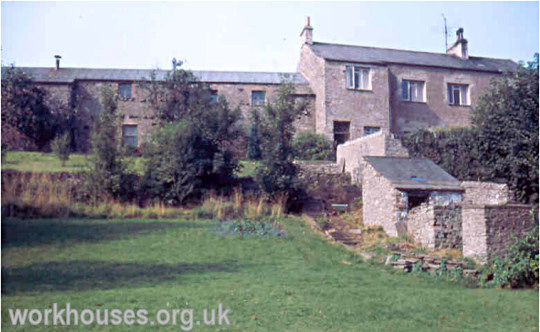
Former East Ward workhouse from the east, 1970s
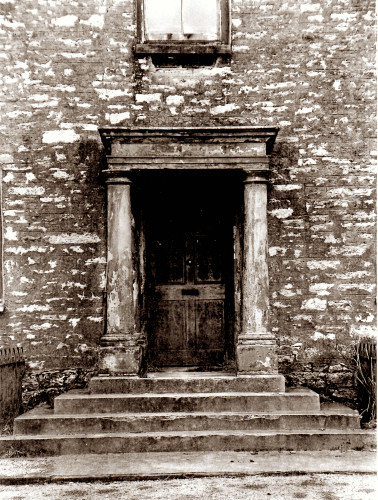
Former East Ward workhouse entrance ('Eden House' just visible above door), 1970s
Robinson Wharton, who grew up in the 1930s in the East Ward village of Winton, recalls:
After the institution finally closed in 1961, parts of the premises were used for a variety of purposes including a shooting gallery, a builder's yard and a Sunday school. The buildings were demolished in 1974 and the site was redeveloped for housing.
Records
Note: many repositories impose a closure period of up to 100 years for records identifying individuals. Before travelling a long distance, always check that the records you want to consult will be available.
- Kendal Archive Centre, Kendal County Offices, Kendal LA9 4RQ. Holdings include: Guardians' minutes (1836-1930); Register of inmates (1892-1957); Births (1874-1913); Deaths (1874-1960); etc.
Staff
Inmates
Bibliography
- Cumbria Federation of Women's Institutes (1994) Cumbria - Within Living Memory Kendal: Countryside Books.
- Robinson Wharton A North Westmorland Lad 1932-1942
Links
- None.
Acknowledgment
- Thanks to Pete Lewis for providing pictures and information, and also to Elizabeth Ellis for help in compiling this page.
Unless otherwise indicated, this page () is copyright Peter Higginbotham. Contents may not be reproduced without permission.


